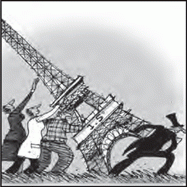ELI Model Law for Implementing the Nationally Determined Contributions Submitted Under the Paris Agreement Through Domestic Legislation
The Paris Climate Agreement contemplates a global climate outcome based on the aggregated contributions of individual countries. As such, the Agreement's success will depend entirely on what happens around the world at the national level. Achieving an important national policy most often begins with lawmaking. This is no less true here. Indeed, without legislation that enshrines a country's Paris contributions as national policy and law and propels those contributions forward through a law-based implementation mechanism, meaningful forward movement will prove elusive.

